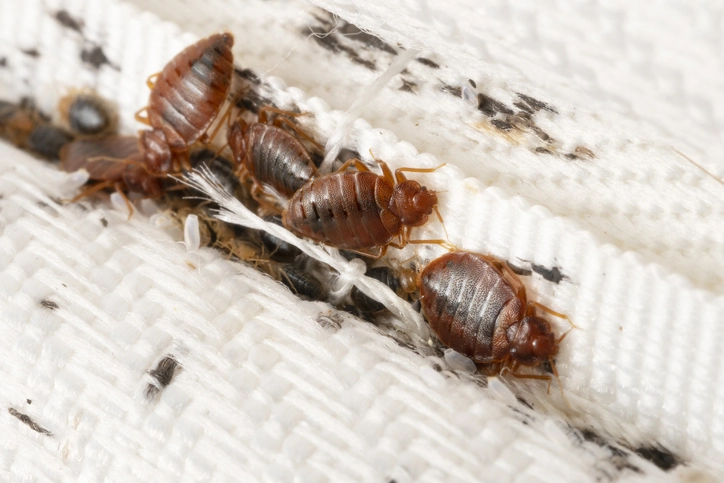Comprehending the Lifecycle of Parasites for Targeted Control Techniques
Understanding the lifecycle of bugs is an essential aspect of reliable insect management techniques. Through a deeper understanding of just how bugs grow and develop, tailored control methods can be created to attend to details points in their lifecycle, eventually leading to even more effective parasite management results.
Significance of Understanding Parasite Lifecycle
Comprehending the lifecycle of insects is essential for establishing reliable and targeted control strategies in insect management. By comprehending the different phases a bug goes via from egg to grownup, pest control experts can identify susceptible points in the lifecycle where intervention can be most successful.
Furthermore, acknowledging the certain ecological problems essential for every stage of the pest's lifecycle can assist choices on environment alteration or exemption approaches to disrupt the lifecycle and minimize parasite populaces. This expertise enables pest administration experts to implement proactive actions as opposed to depending exclusively on responsive therapies, leading to even more sustainable and long-term bug control options. Eventually, a thorough understanding of parasite lifecycles equips insect control specialists to tailor their strategies properly, making the most of and reducing ecological effects control end results.
Trick Stages in Parasite Advancement
To effectively carry out targeted control approaches in insect administration, a critical aspect hinges on adequately identifying and comprehending the vital phases in pest advancement. Bug growth generally consists of a number of key phases that are vital for their lifecycle and administration. The initial stage is the egg phase, where pests lay eggs that later hatch right into larvae. Larvae after that proceed right into pupae, a phase where they undertake transformation prior to arising as grown-up pests. Comprehending these stages is essential as it assists in pinpointing weak spots in the lifecycle where control procedures can be most effective.

Vulnerabilities in Insect Lifecycle
Throughout the numerous stages of a bug's lifecycle, unique susceptabilities emerge that can be tactically targeted for efficient control procedures (A1 bed bug removal houston). One important vulnerability lies in the egg stage, where parasites are often more at risk to specific pesticides or biological control agents due to their soft external covering, making them easier targets for treatment. Recognizing these vulnerabilities in the insect lifecycle is essential for establishing effective and precise control approaches that effectively take care of parasite populaces while decreasing ecological impact.
Implementing Targeted Control Measures

Applying targeted control procedures usually involves a multi-faceted strategy. This might include habitat alteration to make the atmosphere less hospitable to parasites, such as getting rid of standing water for insect control or sealing access factors for rodents. Furthermore, biological control approaches can be made use of, where all-natural predators or view microorganisms are introduced to keep pest populaces in check.
Chemical control, such as the cautious application of pesticides, is another typical technique. It is crucial to use these compounds judiciously to minimize environmental effect and possible injury to non-target varieties - A1 Bed bug exterminator houston LLC. Integrated Insect Administration (IPM) methods that incorporate numerous control measures in a coordinated and sustainable manner are commonly one of the most effective in accomplishing look what i found long-lasting parasite administration goals. By implementing targeted control measures based upon a complete understanding of pest lifecycles, parasite populaces can be efficiently regulated while decreasing threats to human wellness and the setting.
Enhanced Pest Monitoring Practices

Furthermore, the unification of organic control agents, such as all-natural predators or virus of bugs, can aid reduce dependence on chemical pesticides and promote an extra balanced environment. Implementing physical obstacles and traps can additionally be part of improved pest administration techniques, offering non-toxic and targeted options for parasite control. Additionally, making use of scents and various other semiochemicals can interfere with pest mating patterns and communication, causing lowered pest populations gradually.
Conclusion
By recognizing vital phases in bug advancement and vulnerabilities in their lifecycle, targeted control actions can be applied to lessen insect populaces. Boosted insect management techniques can assist decrease the reliance on broad-spectrum chemicals and promote even more eco friendly and lasting bug control methods.
Recognizing the lifecycle of insects is important for you could try these out creating reliable and targeted control techniques in bug administration. By understanding the numerous stages a pest goes through from egg to adult, parasite control specialists can determine vulnerable factors in the lifecycle where treatment can be most successful. Inevitably, a complete understanding of insect lifecycles encourages insect control experts to tailor their methods effectively, making the most of and lessening environmental effects control end results.
By implementing targeted control procedures based on a thorough understanding of bug lifecycles, parasite populations can be efficiently regulated while reducing dangers to human wellness and the atmosphere.
By recognizing key stages in parasite development and vulnerabilities in their lifecycle, targeted control procedures can be applied to minimize insect populaces.
Comments on “Leading A1 Bed Bug Treatment in Houston - Quick and Affordable”